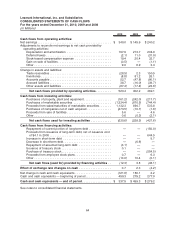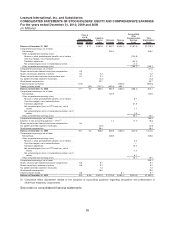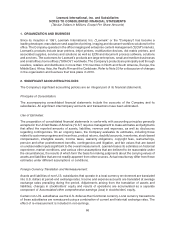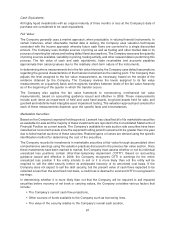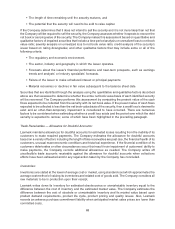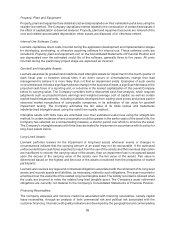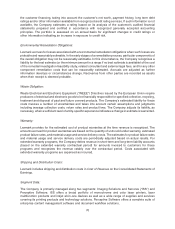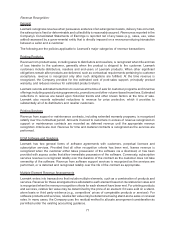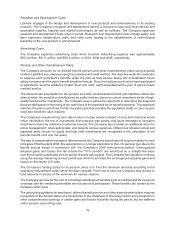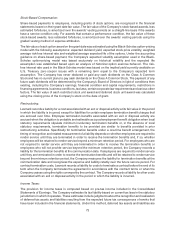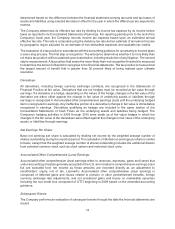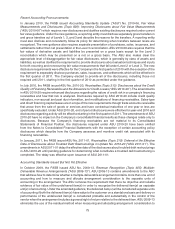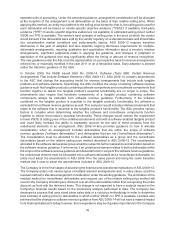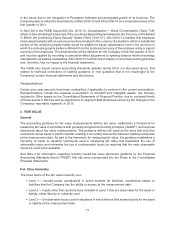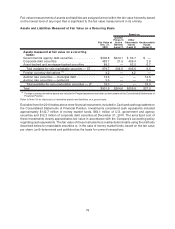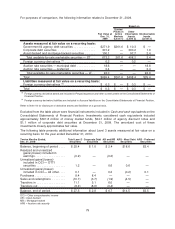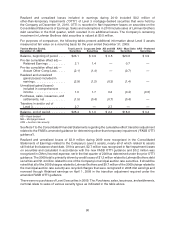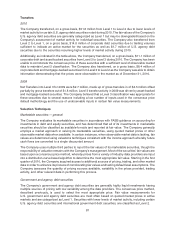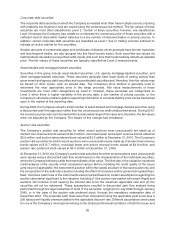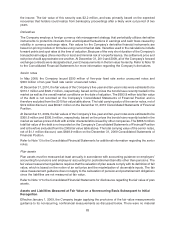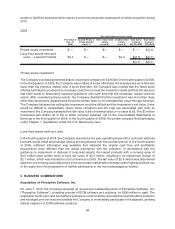Lexmark 2010 Annual Report Download - page 80
Download and view the complete annual report
Please find page 80 of the 2010 Lexmark annual report below. You can navigate through the pages in the report by either clicking on the pages listed below, or by using the keyword search tool below to find specific information within the annual report.determined based on the difference between the financial statement carrying amounts and tax bases of
assets and liabilities using enacted tax rates in effect for the year in which the differences are expected to
reverse.
The Company determines its effective tax rate by dividing its income tax expense by its income before
taxes as reported in its Consolidated Statements of Earnings. For reporting periods prior to the end of the
Company’s fiscal year, the Company records income tax expense based upon an estimated annual
effective tax rate. This rate is computed using the statutory tax rate and an estimate of annual net income
by geographic region adjusted for an estimate of non-deductible expenses and available tax credits.
The evaluation of a tax position in accordance with the accounting guidance for uncertainty in income taxes
is a two-step process. The first step is recognition: The enterprise determines whether it is more likely than
not that a tax position will be sustained upon examination, including resolution of any litigation. The second
step is measurement: A tax position that meets the more-likely-than-not recognition threshold is measured
to determine the amount of benefit to recognize in the financial statements. The tax position is measured at
the largest amount of benefit that is greater than 50 percent likely of being realized upon ultimate
resolution.
Derivatives:
All derivatives, including foreign currency exchange contracts, are recognized in the Statements of
Financial Position at fair value. Derivatives that are not hedges must be recorded at fair value through
earnings. If a derivative is a hedge, depending on the nature of the hedge, changes in the fair value of the
derivative are either offset against the change in fair value of underlying assets or liabilities through
earnings or recognized in Accumulated other comprehensive earnings (loss) until the underlying hedged
item is recognized in earnings. Any ineffective portion of a derivative’s change in fair value is immediately
recognized in earnings. Derivatives qualifying as hedges are included in the same section of the
Consolidated Statements of Cash Flows as the underlying assets and liabilities being hedged. The
Company’s hedging activities in 2008 through 2010 were made up of fair value hedges in which the
changes in the fair value of the derivatives were offset against the changes in fair value of the underlying
assets or liabilities through earnings.
Net Earnings Per Share:
Basic net earnings per share is calculated by dividing net income by the weighted average number of
shares outstanding during the reported period. The calculation of diluted net earnings per share is similar
to basic, except that the weighted average number of shares outstanding includes the additional dilution
from potential common stock such as stock options and restricted stock units.
Accumulated Other Comprehensive (Loss) Earnings:
Accumulated other comprehensive (loss) earnings refers to revenues, expenses, gains and losses that
under accounting principles generally accepted in the U.S. are included in comprehensive earnings (loss)
but are excluded from net income as these amounts are recorded directly as an adjustment to
stockholders’ equity, net of tax. Lexmark’s Accumulated other comprehensive (loss) earnings is
composed of deferred gains and losses related to pension or other postretirement benefits, foreign
currency exchange rate adjustments, and net unrealized gains and losses on marketable securities
including the non-credit loss component of OTTI beginning in 2009 based on the amended accounting
guidance.
Subsequent Events:
The Company performs an evaluation of subsequent events through the date the financial statements are
issued.
74


